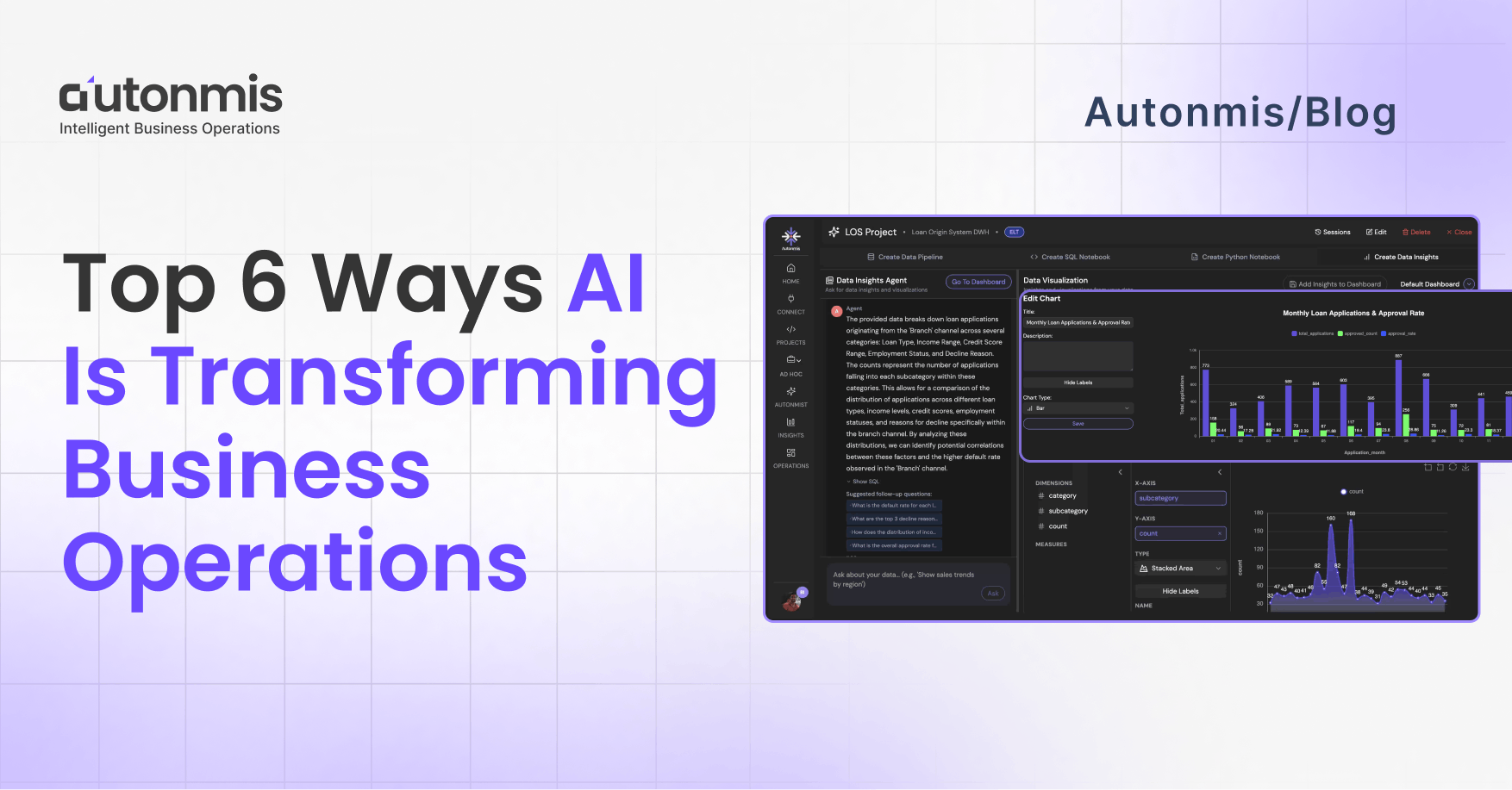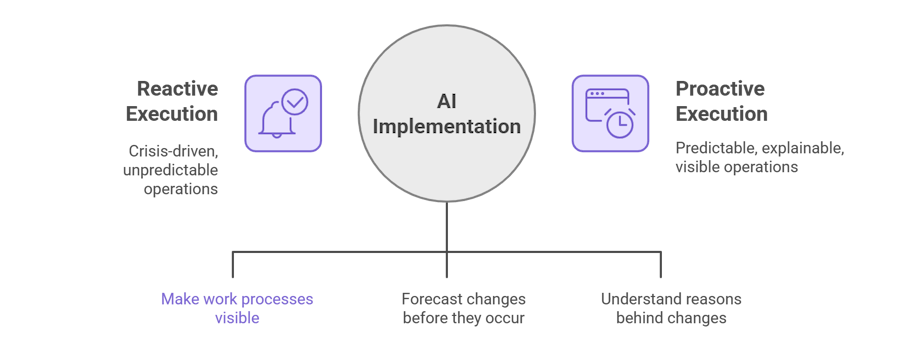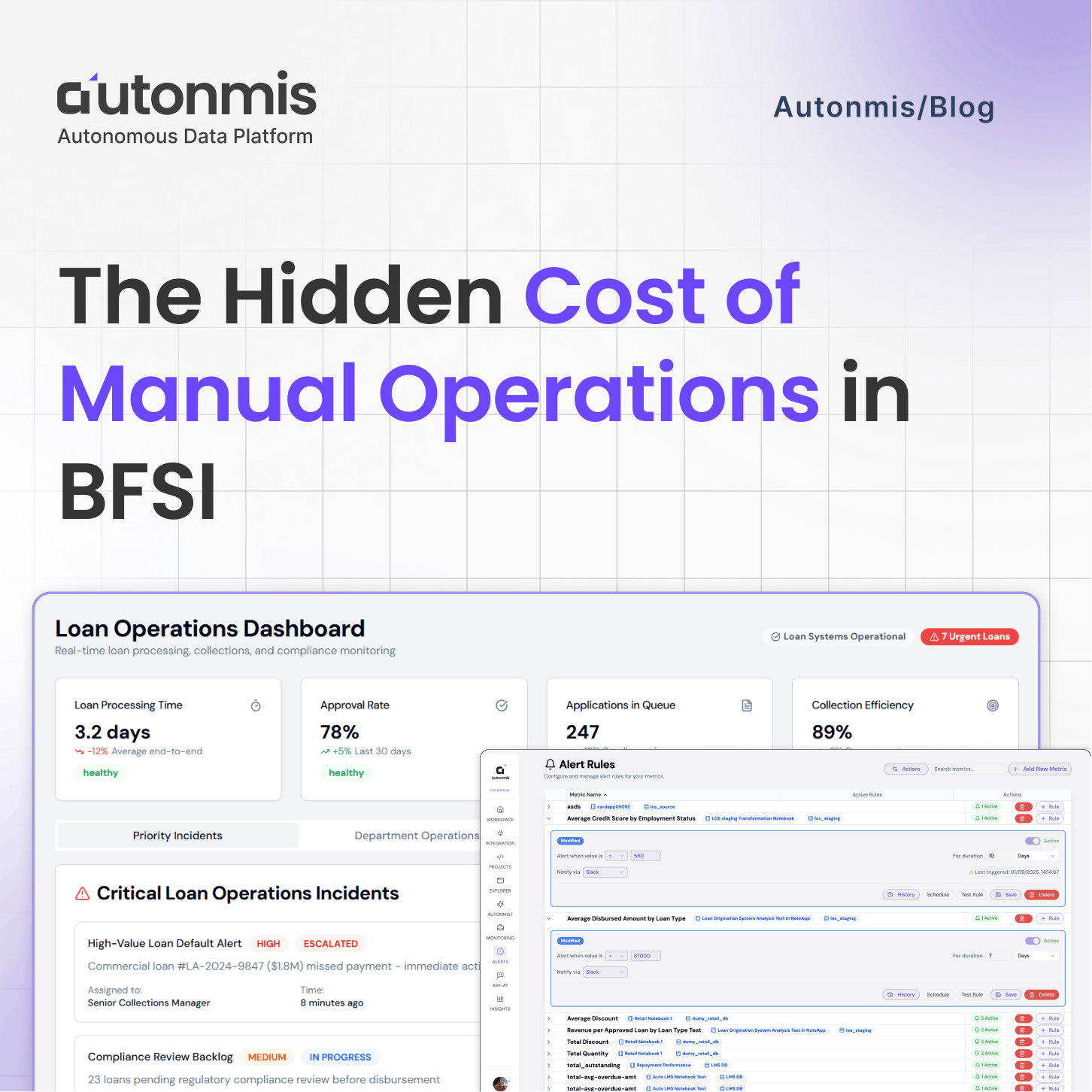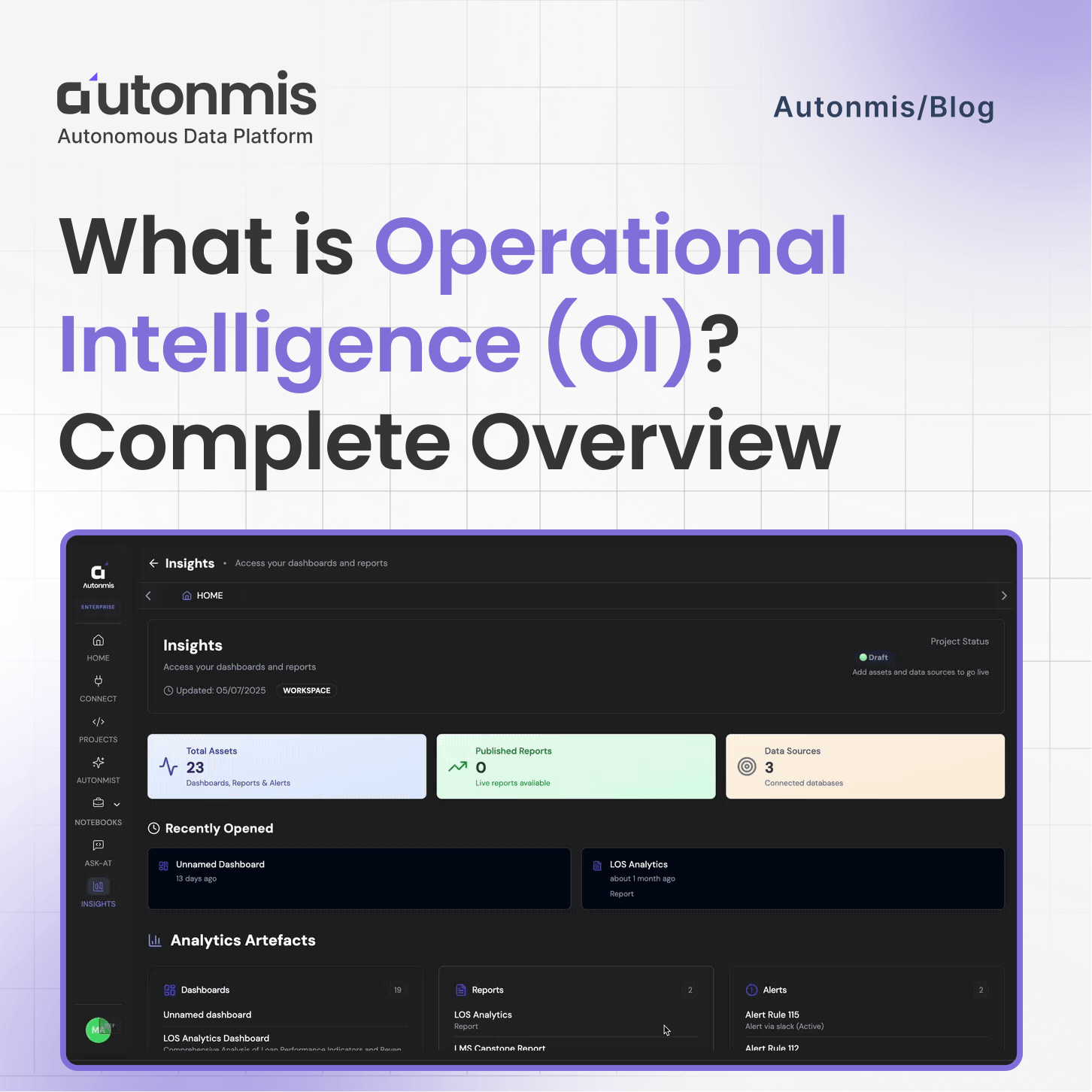10/23/2025
Top 6 Ways AI Is Transforming Business Operations
Discover how AI is transforming business operations by providing real context, early awareness, and self-managing workflows. Uncover the hidden truths behind your data.

You can have all the dashboards in the world, and still not see what’s really happening.
That’s the quiet truth behind most business operations today. Numbers look green, reports look good, but beneath that surface? Delays, mismatches, and missed opportunities keep piling up.
AI isn’t fixing this with fanfare. It’s doing it quietly, by changing how information flows, how work gets done, and how leaders make decisions.
Here are top 6 ways AI is transforming business operations
How AI Is Transforming Business Operations
1. From reports to real context
Dashboards are great for totals.
They’re terrible at telling stories.
Most businesses know what is happening - 10% churn, 5% delays - but not why.
AI connects the dots between systems and fills in the story: which workflows, partners, or bottlenecks created the outcome.
Leaders can see cause and effect in a single frame rather than sifting through spreadsheets and Slack messages.
You begin to see patterns and cease reporting numbers. This is one way how AI is transforming business operations.

Checkout: The Hidden Cost of Manual Operations in BFSI
2. From lagging visibility to early awareness
Problems in most organizations only become noticeable when they become costly.
It is already late when a report reveals a refund spike, missed dispatch, or SLA drift.
AI alters that timing.
Small delays, subtle data drifts, and recurring failures are just a few examples of the deviations it detects early and alerts users to before they become incidents.
Days of cleanup and a few zeroes in expenses can be avoided with that few-hour head start.
Timing is what gives you control, not making predictions for their own sake.
3. From manual supervision to self-managing workflows
Each operations team has its own version of a backlog, with claims pending validation, invoices pending approval, and tickets awaiting triage.
Those jams can be silently removed by AI.
It tracks resolution, assigns ownership, and even rearranges tasks according to business value rather than arrival time.
This implies that a ₹10L payment problem doesn't take longer than a ₹1K one.
Human effort is directed where it is most needed by the system, which gives priority to what is important.
4. From expertise bottlenecks to shared intelligence
Every business depends on a small group of individuals who are simply adept at solving problems.
Speed decreases when they're not there.
AI transforms human instincts into reusable logic by learning from their checks and context.
New team members can now handle 80% of cases without waiting for the “go-to” person.
It’s not replacing judgment.
It’s spreading it.
5. From red alerts to impact-first decisions
Most dashboards handle every issue in the same way.
AI rates them according to their financial, regulatory, and reputational effects.
Leaders can see which delays have a real impact on results, not just which ones appear first.
Organizations react differently as a result: there are fewer surprises, faster focus, and less noise.
Checkout: What is Operational Intelligence (OI)? Complete 2025 Overview
6. From fragmented truth to one shared version
CX, product, operations, and finance frequently use slightly different data.
This is how alignment fails, not because of disagreement but rather because of delay.
AI builds a shared operational layer where everyone sees the same live state - same data, same timestamp, same context.
When reality syncs across functions, coordination stops being a meeting and becomes muscle memory.
The quiet transformation underneath
AI in operations isn’t about grand automation.
It’s about making work visible, predictable, and explainable, without waiting for a crisis to prove the gap.
When every team is able to recognize the changes, comprehend the reasons behind them, and take action before they become more severe -
Reactive execution is stopped. It takes on a rhythm.
And that is the difference between teams that scale well and those that struggle.

Checkout: How Predictive Analytics Improves Operational Efficiency
Final Thought
The goal of AI in operations is not to chase efficiency metrics.
It's about eliminating the obstacles that impede decision-making and conceal exceptions.
It's not the companies with more dashboards that are winning this decade.
They are the ones where AI subtly makes sure nothing important is missed.
Because in operations, transformation begins with the way work is completed on a typical Tuesday, not with strategy decks. And this is how AI changes business operations
Recommended Learning Articles

9/22/2025

AB
The Hidden Cost of Manual Operations in BFSI

8/16/2025

AB
What is Operational Intelligence (OI)? Complete 2025 Overview
Actionable Operational Excellence
Autonmis helps modern teams own their entire operations and data workflow — fast, simple, and cost-effective.